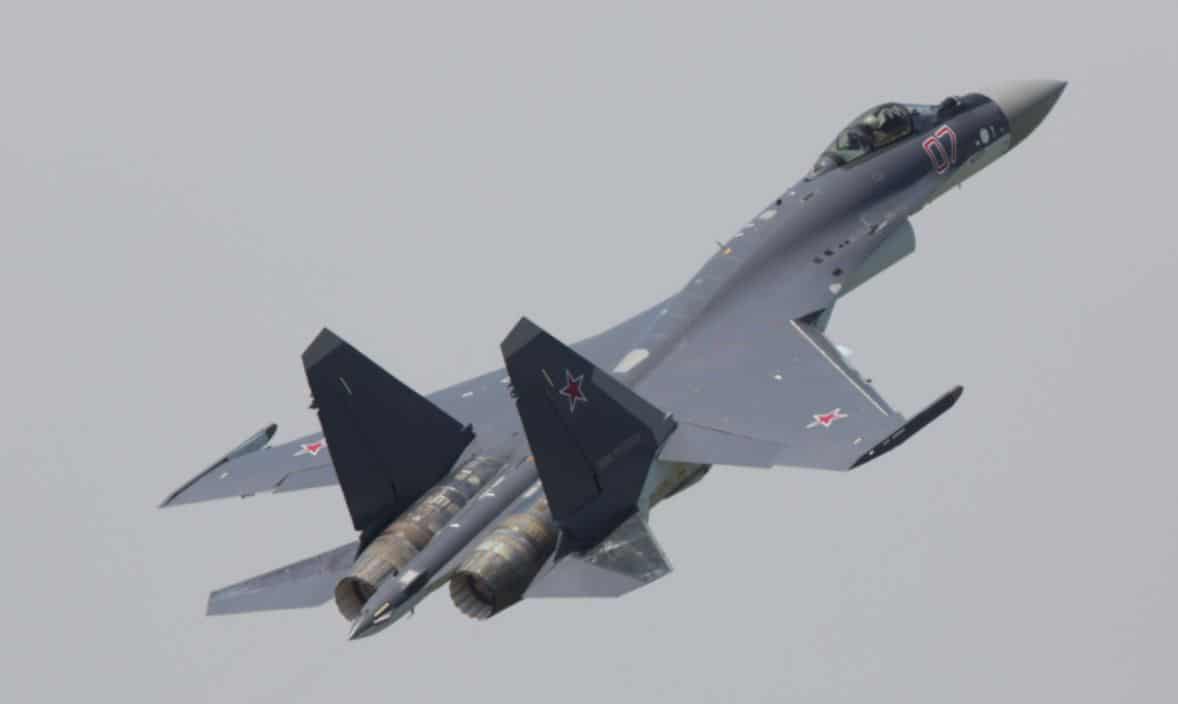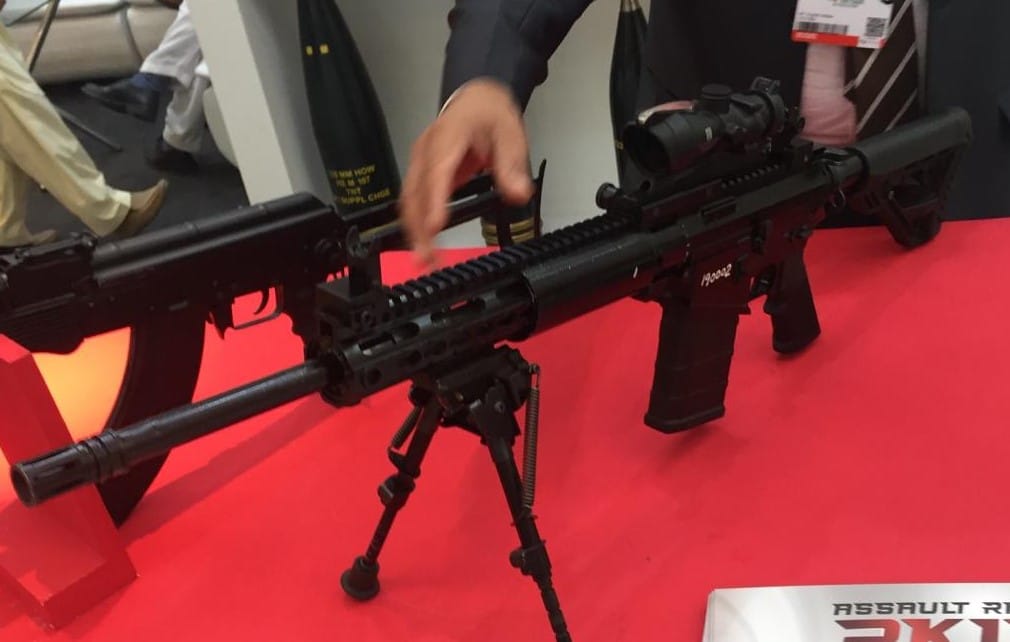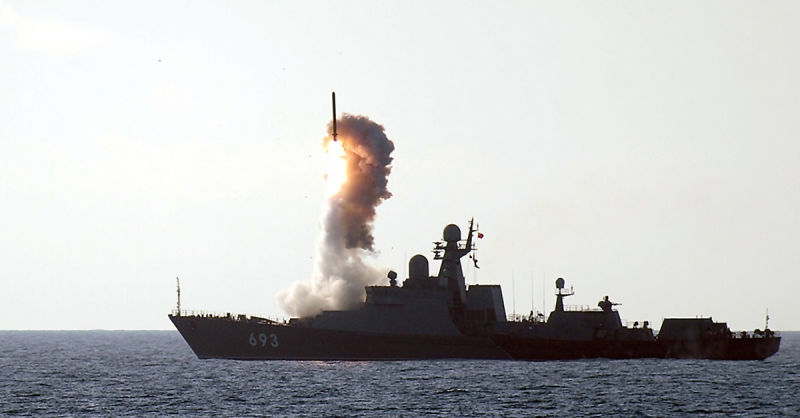2592Views 12Comments

Russia looks to the Middle East for new and returning defence markets
Russia’s United Aircraft Corporation (UAC) brought its marquee fighter, the Sukhoi Su-35 Flanker-E, to the 2017 Dubai Air Show as part of a broad effort to secure new markets for its big-ticket items in the Middle East and to regain entry to legacy markets which had bought Russian through the Cold War.
The Su-35 is drawing interest from the United Arab Emirates (UAE), which, according to Russia’s Deputy Prime Minister Dmitry Rogozin, is negotiating for an unspecified number of the fighter. Russia hopes to close a sale by the end of 2017 and, ideally, expand it to “several dozen” Flanker-Es.
However, UAC is also eager to generate interest for the Mikoyan MiG-35 Fulcrum-F, a twin-engine multi-role fighter equipped with the Zhuk-AE active electronically-scanned array (AESA) radar. UAC and MiG are pitching the MiG-35 for its competitive acquisition and life-cycle costs, which MiG claims are 20% and 30-40% lower, respectively, than competing Western fighters.
With a focus on legacy MiG-29 users, especially in the developing world, the Russian Aircraft Corp. MiG’s Director General, Ilya Tarashenko said that talks are taking place with more than 30 countries. Bangladesh, India, Kazakhstan, Myanmar, Malaysia and Serbia are among the MiG’s prospective customers.
The Almaz-Antey S-400 long-range surface-to-air missile (SAM) system is making in-roads in the regional market as well, with Turkey signing on recently. Saudi Arabia has also begun negotiations for the S-400, with Bahrain also expressing interest in the system. For Russia, the S-400 seems to have become its entry-ticket to accessing markets that continue to lean heavily on American and Western European armaments.
In an interview with Aviation International News (AIN), the Director of the Russian Federal Service for Military-Technical Cooperation (FSVTS), Dmitri Shugayev outlined Moscow’s defence export objectives, citing the Dubai Air Show as a major event. The FSVTS defines Russia’s defence export policies.
Shugayev also spoke of Pakistan, with whom Russia had relaunched defence relations in 2015. The FSVTS head reiterated that the central focus of those ties was counterinsurgency and counter-terrorism oriented, but also suggested that there are no explicit limits to scope of armament sales to Pakistan.
“With Pakistan, we have an agreement now on military-technical cooperation: I signed it on behalf of the Russian government this year. To be specific, we will supply the Mi-35 [helicopter] and we will see how events develop further. Our relations are based on a common goal of combatting terrorism, so in the future I also do not exclude any new export sales.”
Russia is also working to position itself as a factor in the defence industry development goals of its current and prospective customers. At the Dubai Air Show, UAC announced that it has begun talks with the UAE to potentially to co-produce the Irkut MC 21 airliner. UAC also signed an memorandum-of-understanding with Turkish Aerospace Industries (TAI) to “implement joint design and production in the field of civil aviation.” TAI’s General Manager Temel Kotil expressed interest in developing a 100-seat airliner.



12 Comments
by TanhayeekiZubani
lifecycle cost claims might need to be taken a pinch of salt, for example in India, only with heavy investment in MRO facilities have availability rates started crossing 60% for MiG/Su series jets. Russian equipment is broadly speaking, yes, relatively cheap upfront, rugged etc…, but that low upfront costs tend to mask considerable financial costs through the operational lifecycle of the asset.
by Joseph
MiG-29 Fulcrum was considered as a failure comparing to Su-27 Flanker series even among Russian analysts and military enthusiasts. It has much smaller weapon load and range, but not much cheaper than Flanker.
To be fair some Russian military hardware are actually quite decent (I am not talking about Fulcrum of course) but after sales customer service is usually notoriously bad, which I think contributed to the general low avialability of Russian aircrafts.
I have the same doubt about claimed total life-cycle cost of MiG-35, also I doubt changing code name would get rid of all the problems associated with MiG-29 airframe.
The bigger problem of Russian military hardware is Russia no longer has the financial resources to fund new development. All the new fighters are based on old airframes. I consider T-50/Su-57/FGFA as a Flanker variant as well. It would be difficult to stop the decension of Russian defence industry.
by Faisal Jawaid
Question arise that why are we so keen to purchase Russian jets when we know issues with them.
by Joseph
I think it comes down to performance. Other than fifth generation aircrafts Flanker especially Su-35 is almost unbeatable with it’s thrust vectoring and the super maneuverability comes with it. It also has a large weapon load and comparably long range.
So it is problematic and hard to maintain but nobody can deny it is a potent and capable machine. And fifth generation fighters like F-22 and J-20 are not for sale, even F-35 is not available to most countries, and even it is available not a lot of countries can afford it. Also US weapon sales usually has strings attached to it.
So for a lot of countries Su-35 is not a bad deal, it is capable and affordable, even with all the customer service and maintenance related shortcomings.
The real mystery is how Russia managed to sell MiG-29.
by Joseph
I think Su-35’s popularity would go down gradually when more and more fifth gen aircrafts are available. After all dog fight is no longer the future.
by TZK
With my very limited knowledge I think F35 will be used as a first strike weapon to take out radar, command posts, for surgical strikes or act as battlefield sensor. US already has this capability with cruise missiles and awacs. To improve range and weapons load it will have to carry external fuel and weapons making it 4.5 gen but it is not designed to be a dog fighter. In a war scenario it will be accompanied by 4.5 gen fighters that will do the dog fighting and protect it while it acts as a battlefield sensor with limited offensive capability due to limited internal weapons bay. It would be useful to have but is not cost effective as cheaper alternative solutions exist.
by Hassan Raza
Hi Bilal, Why don’t Pakistan Air Force go for Mig-35 for long range naval strikes and air role. Mig-35 will cost less than $45 million a piece means less than even j-10b and we can replace our mirages with Mig-35. After the completion of 150 jf-17 which will retire f-7pgs we have to replace old mirages so i feel mig-35 is a good & cheap choice.
by bill
The Su35 still not in use by any AFso only future will tell how good it is or how much hype was created meanwhile any radar in near future no matter how much capable shall be vulnerable to jamming with exception of AESA. The main point look little shabby in case of SU35 is its PESA radar. On other hand Mig 35 AESA radar still have some problems and has shortt coverage i.e max up to 150 KM meanwhile specs so far came out for Chinese AESA for JF17 are better i.e more than 160KM range .
Further on should also check the overhaul requirements of new Ruski engines and other complications as indicated by some people already.
by Headstrong
Russia managed to sell MiG 29s because they were pretty good aircraft. It was fast and agile, could out-turn any NATO fighter and was armed with cutting-edge missiles. It had a fearsome reputation in the West and even got its own computer game. The twin RD-33 turbofan engines gave it excellent acceleration and a top speed of Mach 2.25—faster than the F-16. Its chief claim to fame was its superb maneuverability—it could outperform the F-16 in both instantaneous and sustained turns (28 degrees per second versus 26). NATO pilots that practised against the German Air Force Fulcrums found that in short-range dogfights the MiG-29 was more agile than anything they threw at it.
One other advantage was the short-range R-73 IR guided missile that could be aimed and fired through a helmet-mounted sight. Till then, a plane had to be pointed at an enemy fighter to target it. The USAF did not acquire a similar capability until 2003. In addition to the R-73, the Fulcrum’s seven hardpoints could equip R-27 medium-range missiles, and older R-60 missiles. Some have also been upgraded to fire R-77 long-range air-to-air missiles.
MiG-29s are designed to function while operating from unprepared airstrips (presumably captured by advancing Russian tank divisions)—its air intakes are specially protected against debris.
Drawbacks included its old-fashioned electronics, short service life and limited range. It did not feature modern pilot displays, controls and fly-by-wire avionics. Its sensors were mediocre.
However, subsequent upgrades to avionics, sensors, increased hard points and increased service life have significantly improved them. And while the erstwhile Iron Curtain countries all retired the Su-27, Poland, Bulgaria and Slovakia still retain their fleet of Fulcrums.
While the Fulcrums were a bargain for less wealthy countries worried about conflict on its borders, it had less appeal to air forces looking to project power over distance.
Also, one must consider the Soviet doctrine of fighter production when considering the Mig-29 or any other Soviet fighter for that matter. The Soviets were all about numbers. One Soviet premier answered a question posed to him about how 1 NATO tank was worth 4 Soviet tanks. His response was, “that’s why we have 5 tanks for every 1 of theirs!”.
Like all Soviet fighters, a base model of the Mig-29 was released early and sold to Arab nations for hard currency. Slightly improved models were sold to satellite states like East Germany. The Soviets and then Russians continued improving the Mig-29 and its final evolution is the Mig-35 which is way more advanced than the base model Mig 29 being discussed here.
by U
To me it seems like this is where PAF is heading as it probably has no more options in the “east and west” because of all the regular and obivious reasons. But even if This is closed, which can be expected, then it will only be the Mighty Thunderrrr.
The positive side of this can be that Pakistan will be pushed towards self reliance at a much faster pace, hopefully.
by TZK
There may be opportunity to buy used western jets once the F35 is delivered to all the customers. There will be a lot of F16’s (assuming US will allow its sale to Pak) and European jets. Latest news is that customers are reducing F35 orders already placed so that could mean they will hang on to their 4th gen jets. Alternatively, the US might decide to sell the F35 in ME so that would be even better for Pak as they may offload their older inventory to Pak, F16’s, F15’s and potentially EF2000, Mirage 2000, etc. An Arab friend loves Pak Mangoes maybe we can pay for them in Mangoes.
by TZK
There may be opportunity to buy used western jets once the F35 is delivered to all the customers. Latest news is that customers are reducing their F35 orders so that could mean they will hang on to their 4th gen jets. Alternatively, the US might decide to sell the F35 in ME to make up the deficit. ME may offload their older inventory F16’s, F15’s and potentially EF2000, Mirage 2000, etc. US may acquiesce to sale of used jets to Pak to sell F35’s. All supposition and I am sure PAF will be watching the situation closely.